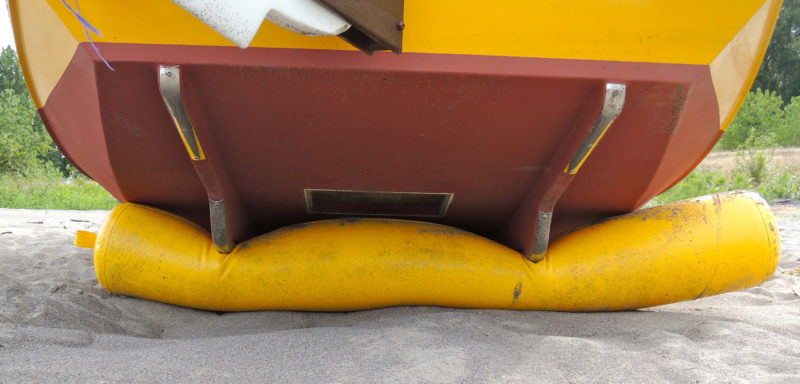 photos and video by the author
photos and video by the authorAs the rollers partially flatten under the weight of the boat, they broaden their area of contact with the sand and glide over it, conforming to its contours, rather than plowing into it.
My friend Sergei and I had put in a long day of sailing on the Columbia River, and pulled into a cove at dusk. I was looking for water deep enough to keep me afloat during the nighttime low tide so I could sleep at anchor. When Sergei told me he’d rather roll his boat onto the beach for the night, I thought he was nuts. Why go to all that trouble? I didn’t think he could possibly move a fully loaded SCAMP ashore.
Sergei produced and inflated two Aeré beach rollers. These tube-like devices are about the size of a large loaf of bread when deflated and rolled up, but filled with air, they’re about 5′ long and 9″ in diameter. Constructed of heavy-duty vinyl-reinforced fabric similar to the material used in whitewater rafts, these rollers are built to last. According to the manufacturer’s website, they are rated to support up to 2,000 lbs.
Using the rollers involves placing a roller under the bow, then pushing or pulling the boat over it. The beach we had landed on was quite steep, so it took both of us to get Sergei’s SCAMP out of the water. With one of us working the bow and the other the stern, the task was manageable. On a flatter beach, Sergei could have moved his boat by himself.
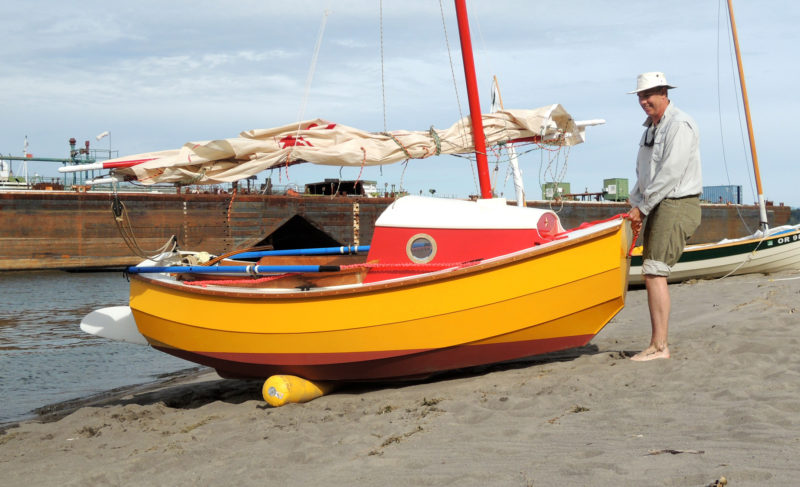
A second roller (in use under the boat in the background) would normally be set just astern to catch the stern as the middle of the boat passes over the roller shown here.
As the boat moves up the beach, so does the roller, but traveling only half the distance the boat travels—it moves one boat length, the boat moves two—and eventually pops out astern. Two rollers allow a boater to keep the boat moving without it coming to rest on the beach. The rollers work on both sand and cobble beaches. With the weight of a boat on it, the roller flattens against the beach, spreading the weight over a wide area and avoiding digging into soft ground.
I went ahead with my plan to spend the night afloat, and anchored offshore. But after a few hours, the water became so rough that I wasn’t going to be able to get any sleep. I persuaded Sergei to help me roll my Arctic Tern ashore, too. Unlike the SCAMP with its flat bottom, the Tern has a pronounced keel that pushed into the roller, but the roller still provided more than enough support for the rounded lapstrake hull to roll my boat up the beach. That night, Sergei and I each kept a roller under the stern to keep our boats level and supported as we slept. In the morning, neither roller showed any indication of losing any air pressure.
With a little practice, rolling the boats to and from the water was fairly easy to do solo. I found that moving the boat slowly and supporting the end farthest from the roller—shifting my position when the roller was centered under the boat— kept it from hitting the ground and grinding to a stop.
One end of the roller has a simple, stout air valve. The valve accepts a fitting for an air pump (inflating the rollers orally is not an option, but a small hand pump like the one Sergei used was perfectly adequate ). The other end has a looped strap that can be used to secure the roller and prevent it from floating away if the boat carries it into the water during a launch.
Sergei swears by his rollers, and I’ve come to see their usefulness. Their ability to move a small boat out of the water during foul weather makes them a good investment for any small boater who needs to sit out a storm or just get a good night’s sleep.![]()
Bruce Bateau sails and rows traditional boats with a modern twist in Portland, Oregon. His stories and adventures can be found at terrapintales.wordpress.com.
Duckworks Boat Builders Supply offers Aeré Beach Rollers for $84.99 each. The rollers are also available from numerous US and international Aeré dealers.
Is there a product that might be useful for boatbuilding, cruising or shore-side camping that you’d like us to review? Please email your suggestions.
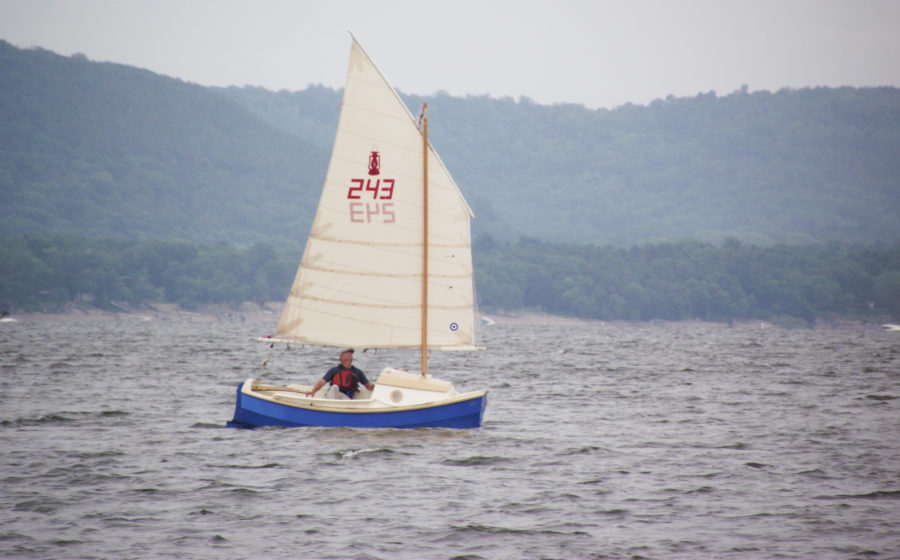
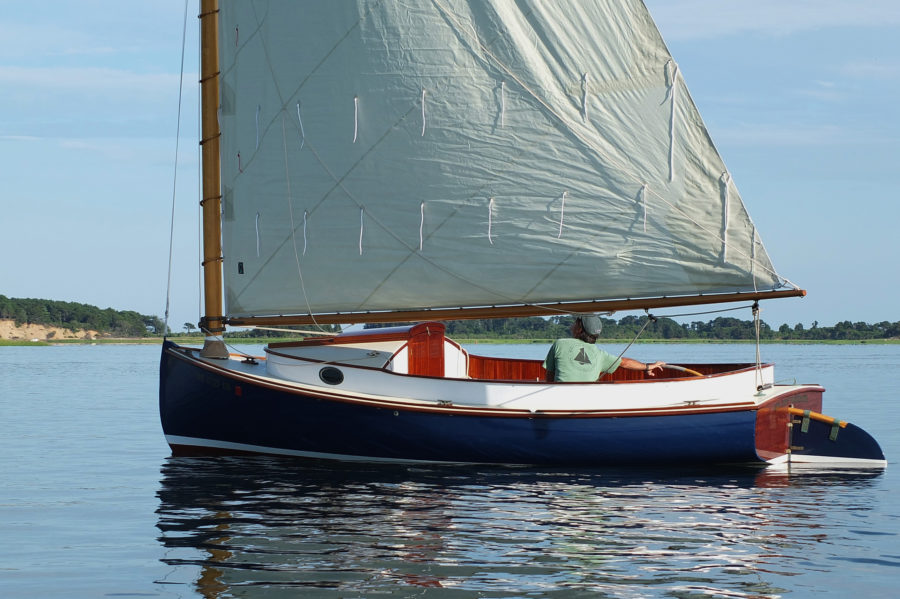
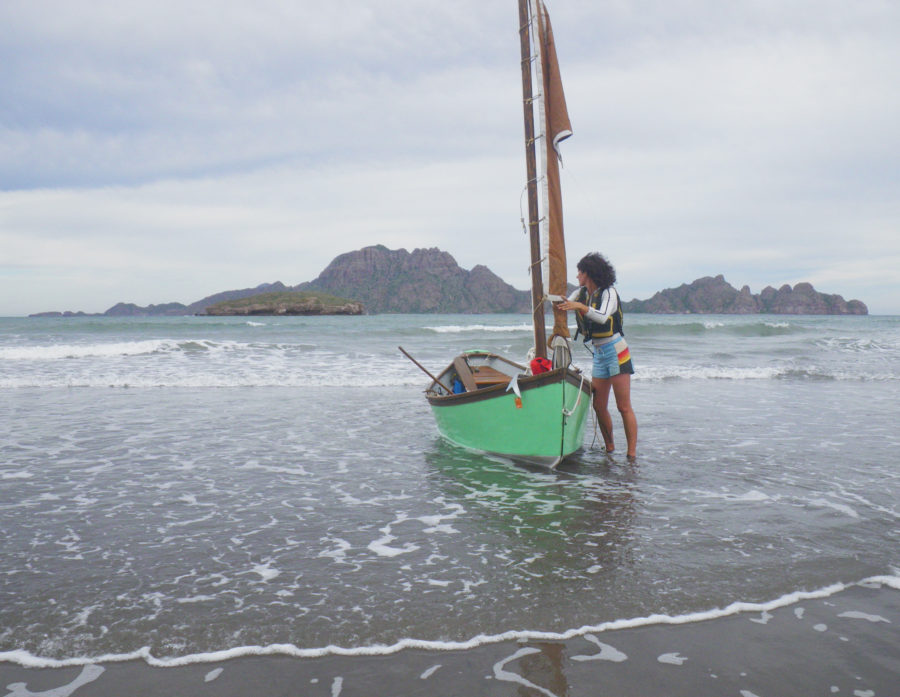
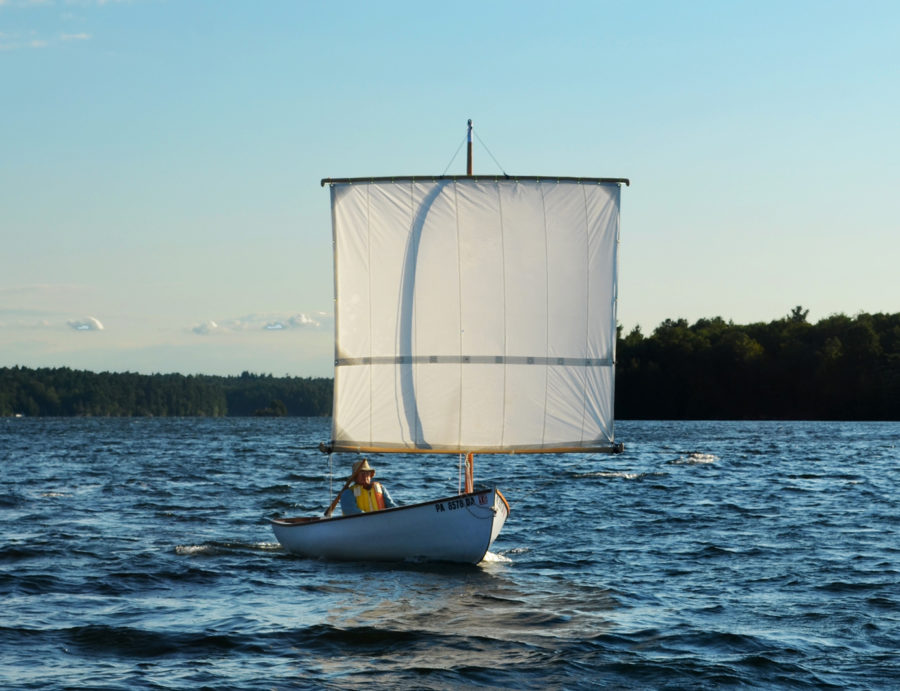
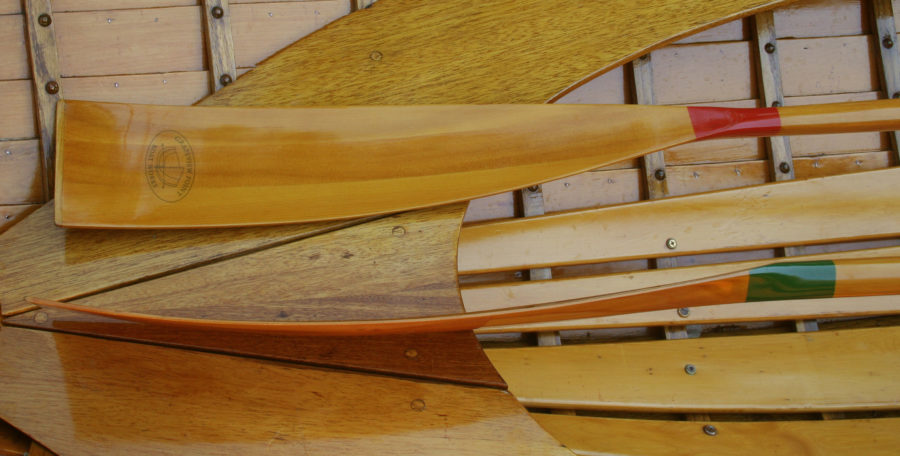
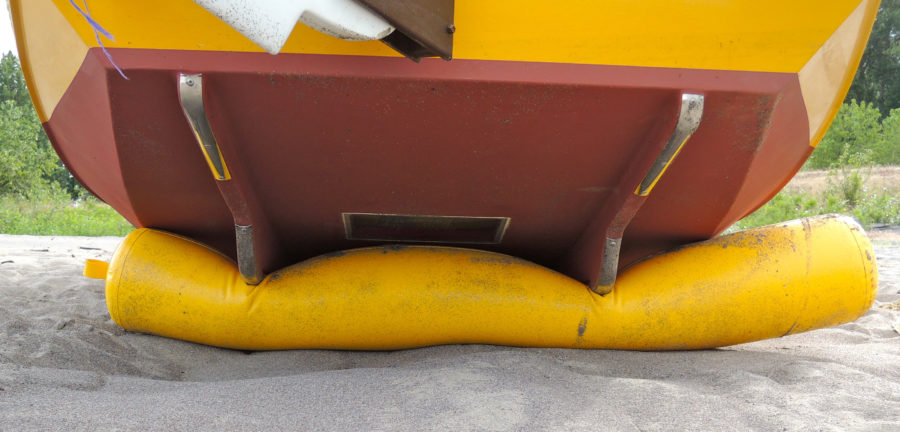
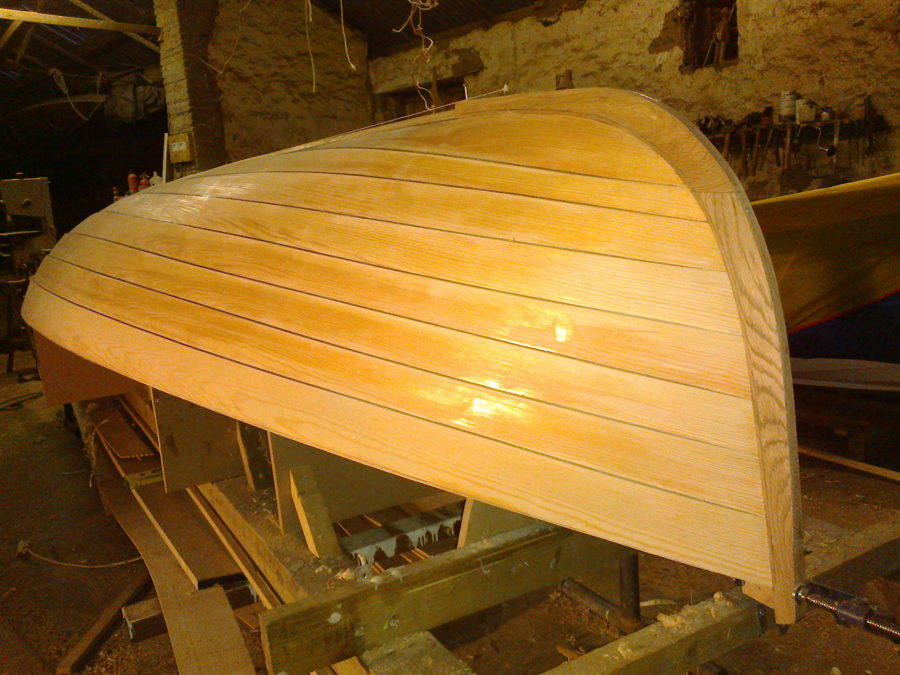
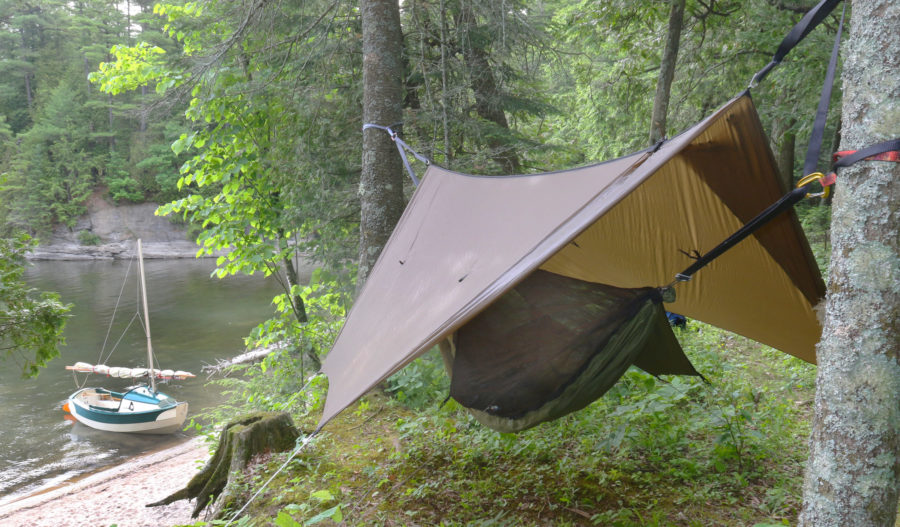
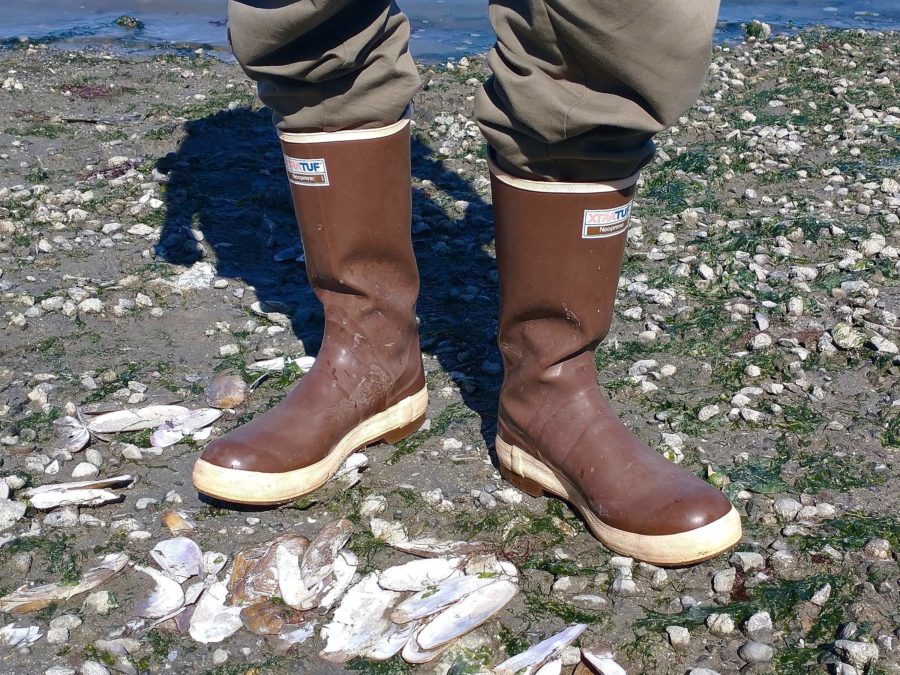
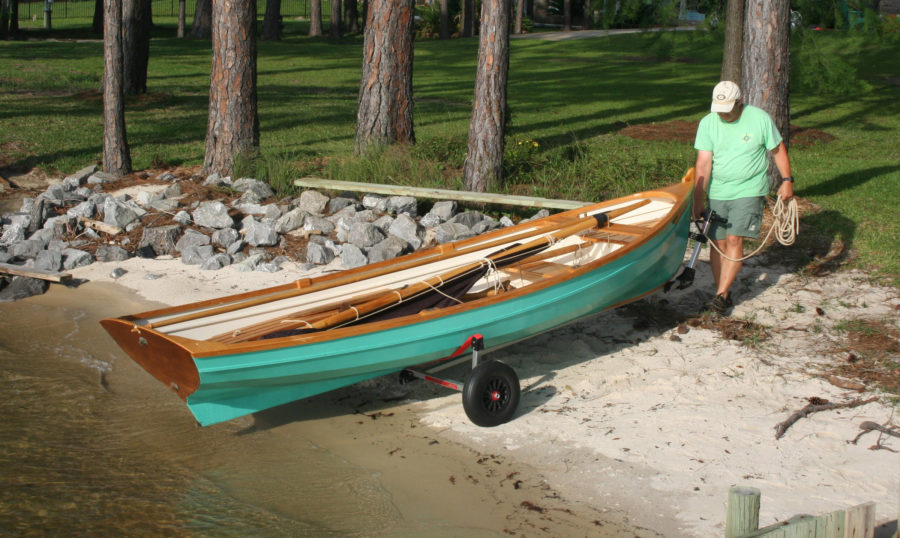
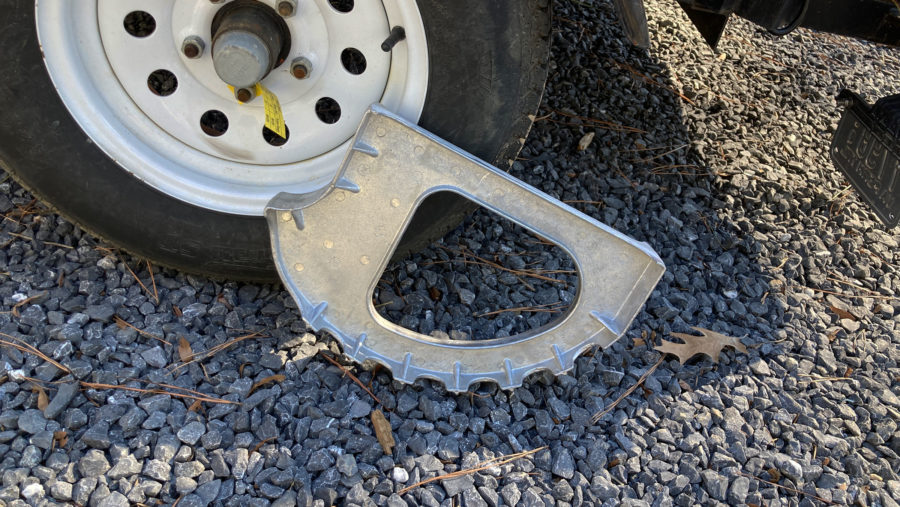
I purchased two of these rollers; their quality of construction is superb. I carry a 5:1 purchase block and tackle with 170 feet of Dacron line to move a Redwing 18 on rollers. A pair of 2″ webbing straps with D-rings placed on each one allows their use as super-sized fenders as well, particularly useful for passing through locks. (See photographs at Duckworks.)
Would these rollers be useful as flotation devices in boats where they could be properly located and secured?
I first saw the Aeré beach rollers at the Chesapeake Maritime Museum’s 2014 Mid Atlantic Small Craft Festival; Bill Rutherford of the John Gardner Chapter of the Traditional Small Craft Association had a pair of them aboard his 13′ peapod. He had bought the rollers specifically for flotation and had not yet tried using them as rollers. You can see them tucked under the thwarts.

A pair of the Aeré rollers occupy about 4.5 cu ft and provide 278 pounds of buoyancy; whether or not that would provide adequate flotation for any boat would be determined by the boat and how well the rollers could be secured low enough to do the most good. A capsize trial to swamp the boat would provide the answer.
Christopher Cunningham, Editor, Small Boats Monthly